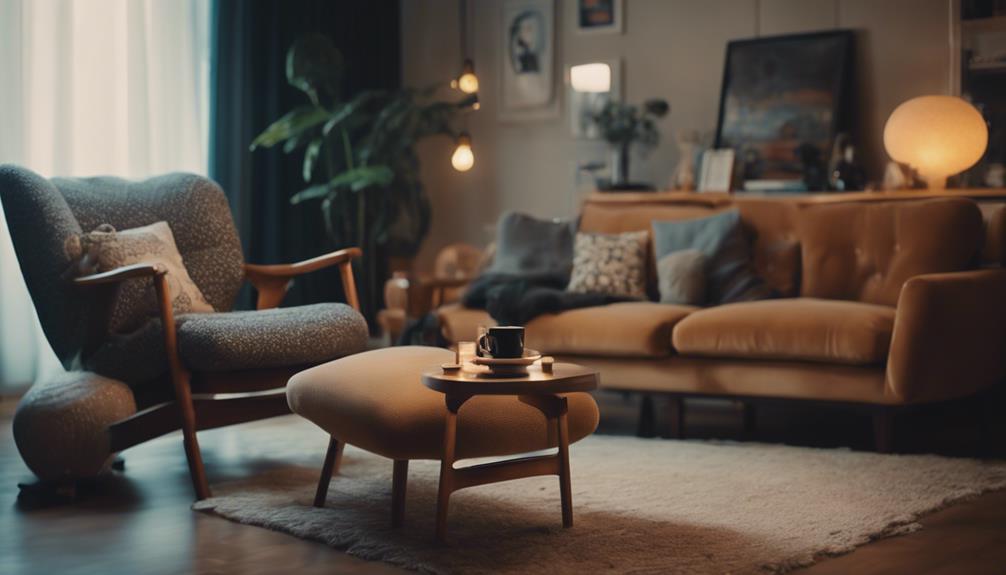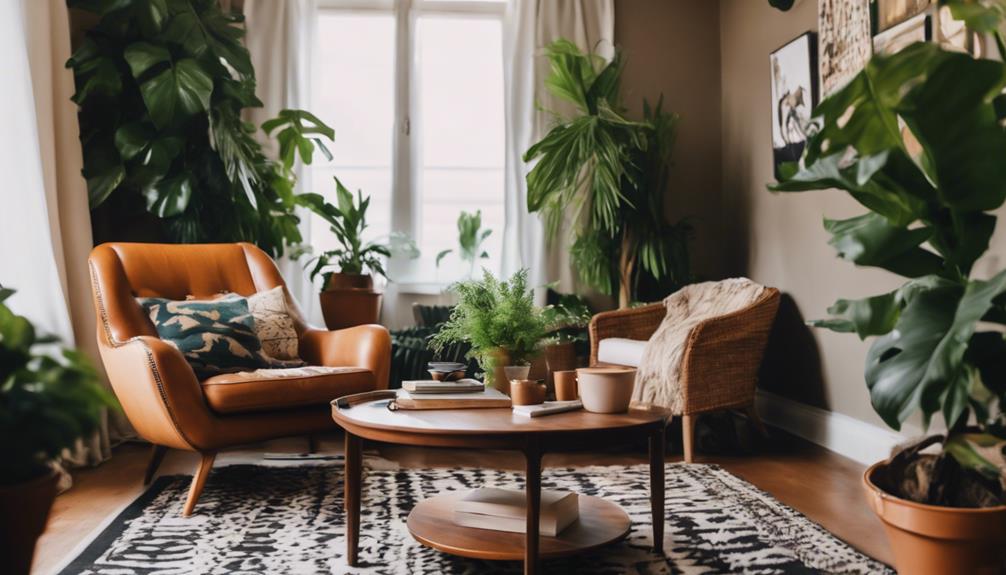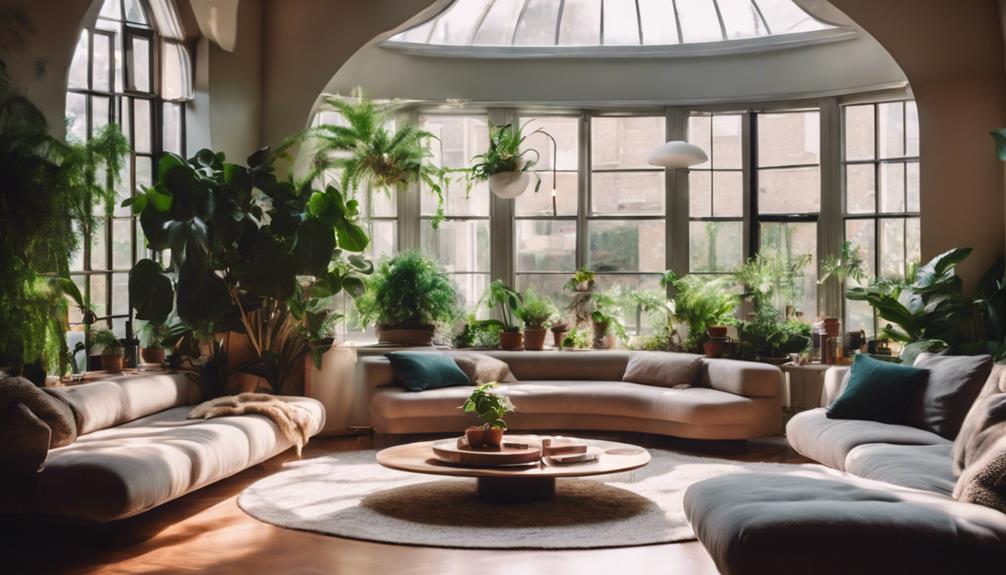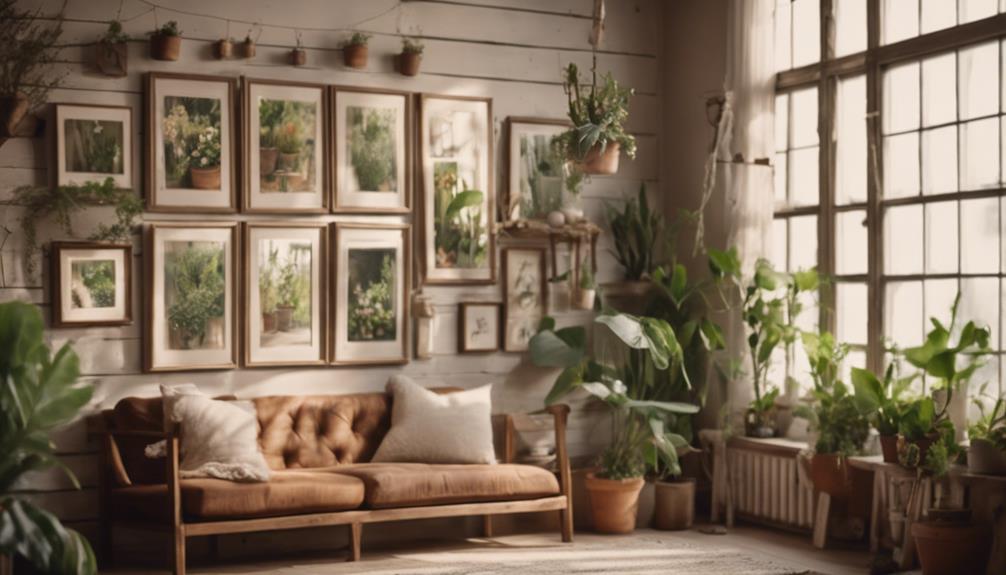Mastering furniture arrangement in unique spaces begins by establishing an anchor point, such as a sofa or bed, to outline your layout. Divide the room into distinct zones using rugs or lamps for clarity. Maintain a consistent decor theme to seamlessly blend these zones, enhancing the overall aesthetic. Be sure to accurately measure your space and furniture to avoid any fitting issues. Lastly, centralize your furniture placement to encourage conversation and flow. By following these strategies, you can create a functional and inviting atmosphere that feels just right. For more tips on enhancing your space, consider exploring rug layering ideas to add depth and visual interest to your arrangement. Experiment with different textures and patterns to make your space feel more welcoming and personalized.
Key Takeaways
- Identify an anchor point to guide your furniture layout, such as a bed or a sectional sofa.
- Segment the room into distinct functional zones using visual dividers like rugs or lamps.
- Maintain a consistent decor theme across all zones for a harmonious look and feel.
- Utilize measuring tools to ensure furniture fits well and allows for comfortable movement.
Determine the Anchor Point

To create a focal point in an oddly shaped room, you should determine your anchor point, like a bed in a bedroom or a sectional sofa in a living room.
This anchor point serves as the foundation for your space, guiding your furniture choices and layout. If you don't have a prominent piece, a large area rug can also act as an anchor, defining the area and providing a sense of cohesion.
Once you've established this focal point, you can select complementary furniture pieces that enhance the overall design. A clear anchor simplifies furnishing challenges, making it easier to visualize how everything fits together.
Segment the Room Into Zones
Segmenting the room into distinct zones allows you to create functional areas, making the most of an oddly shaped space.
Consider how you want to use the room. For instance, designate a main living area for TV viewing, while carving out a cozy reading nook in a corner. In L-shaped layouts, you might split the space into separate sitting and play areas.
Use visual dividers like floor lamps, rugs, or curtains to define these zones. By viewing the room as separate areas, you'll find it easier to arrange furniture effectively, ensuring each zone serves its purpose without feeling cluttered or chaotic.
This approach transforms your unique space into a well-organized, inviting environment.
Maintain a Consistent Decor Theme

A consistent decor theme ties together the various zones in your oddly shaped room, creating a harmonious flow throughout the space. When you maintain a unified style and color scheme, you not only enhance the aesthetic appeal but also downplay any asymmetry.
Consider these key points for effective decor consistency:
- Choose a color palette that resonates throughout the room.
- Select furniture with similar materials and styles.
- Incorporate complementary accessories, like cushions and throws.
- Use artwork that reflects your theme and ties zones together.
Utilize Measuring Tools
Measuring your space accurately guarantees that your furniture fits perfectly in those uniquely shaped rooms. Grab a tape measure and jot down the dimensions of your space, including doorways, windows, and any architectural quirks. This information helps you visualize how different pieces will fit, preventing the frustration of oversized or undersized furniture.
Don't forget to measure your furniture too; knowing the exact dimensions assures a seamless integration into your layout. Also, consider the flow of movement—allow enough clearance for people to walk comfortably around the furniture.
Centralize Furniture Placement

To enhance the functionality of your oddly shaped room, pull furniture into the center rather than pushing it against the walls. This arrangement not only creates a more inviting atmosphere but also emphasizes different zones within the space.
Here are some benefits of centralizing your furniture:
- Encourages conversation among guests
- Defines distinct areas for various activities
- Maximizes the flow of movement throughout the room
- Reduces the feeling of emptiness along the walls
Conclusion
By mastering furniture arrangement in unusual spaces, you can truly elevate your home's vibe.
For instance, imagine transforming a long, narrow living room by placing a sectional sofa in the center, creating a cozy conversation area.
You can then set up a reading nook with a comfy chair and a small table in one corner.
This setup not only enhances functionality but also invites warmth and connection, making your space both stylish and inviting.









